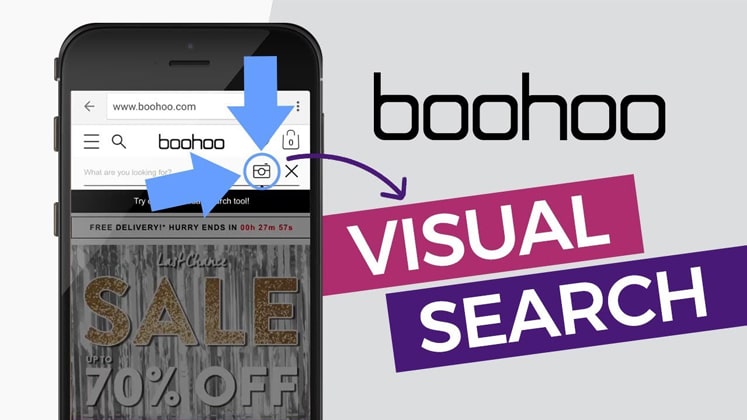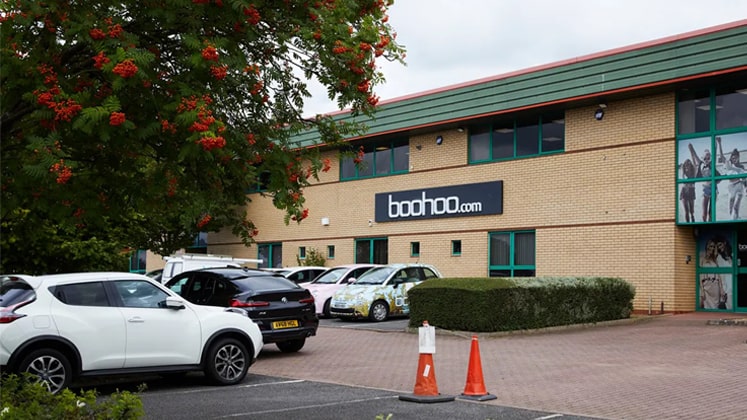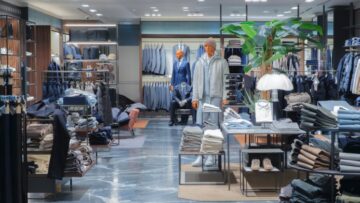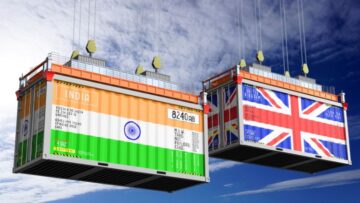
It was all about fast fashion a decade back, and it’s all about ultrafast fashion now. That’s the pace at which the fashion world has been moving and don’t be surprised if the current decade gives a new dimension to the fast-growing ultrafast fashion, which has seen the emergence of many fashion e-tail giants like Boohoo, Asos, Shein, Fashion Nova and more in recent times. While some may like to call them superfast fashion biggies, others might refer to them as smart fashion leaders.
Whatever you might like to call it, but the fact of the matter is that this new-age fast fashion concept is here to stay for some time – after all it is quicker, cheaper and leaner. And with no physical stores and dynamic presence all over the web, it’s popular too amongst youth.
But then quite like fast fashion, the new-age variant too seems to be receiving flak for its unsustainable practices. The faster a garment is produced, more the clothes are disposed of by consumers – thereby creating massive textile waste. It’s as simple as that!
However, the ultrafast fashion retailers claim to not dispose of large numbers of unworn apparels, as they produce only those number of clothes that are required. Now, how much ultrafast fashion is sustainable or not can be discussed in yet another series someday.
Read all about ultrafast fashion at Ultrafast fashion! The new-age fast fashion concept
Amongst the ultrafast/superfast fashion biggies, who have managed to mark their presence lately, is this English clothing giant Boohoo. Founded by Mahmud Kamani and Carol Kane in 2006, it didn’t take much time for Boohoo to understand the pulse of its customers, and become the pioneer of this new superfast fashion phenomenon.
The British online retailer, which targets the 16-30-year old group, specialises in own brand clothing, with more than 36,000 products and 18 million active consumers. Owning notable brands like boohooMAN, PrettyLittleThing, Nasty Gal and MissPap, Boohoo generated around £ 1.75 billion in 2021. It’s been growth and only growth for Boohoo! Therefore it’s no surprise that the e-tailer has been on an acquisition spree, which has increased its number of brands from 7 to 13.
After acquiring the online businesses and all associated intellectual property of Oasis and Warehouse (June 2020) and Debenhams (January 2021) Boohoo agreed to buy “the e-commerce and digital assets and associated intellectual property rights, including customer data, related business information and inventory of the Burton, Dorothy Perkins and Wallis brands in February 2021”.
On the back of a 14 per cent rise in its sales for the year ended 28 February 2022, the e-tailer now hopes its full-year profits to be in line with market expectations of £ 125 million. Notably, Boohoo received 53.4 million orders in 2021 at a year-over-year growth of 27%, while the order frequency was 3 orders/customer in 2021.
Boohoo stock, which is now publicly traded on the London Stock Exchange (LSE: BOO), actually started as a family business. Abdullah Kamani, the Boohoo family patriarch, immigrated to the UK from Kenya back in 1960s and began selling handbags from a street stand. Eventually, he started a textile factory that supplied to the retail bigwigs like H&M, Zara, Topshop and Primark who took the fashion world by storm in 1990s with their cheap clothes and high merchandise turnover.
Abdullah’s business was so successful that he bought himself a Rolls-Royce, while his son Mahmud saw the potential for even greater profits. And then in 2006, Mahmud and his business partner, Carol Kane, began selling cheap clothes directly to consumers through Boohoo.com. In 2013, Mahmud was awarded ‘Entrepreneur of the Year’ at the English Asian Business Awards.
Without the burden of bricks-and-mortar stores, company’s costs were relatively low. Then came Mahmud’s son Umar, who founded PrettyLittleThing at a young age of 24 and soon made it as bigger success as the parent firm Boohoo….and the success story continues.
Boohoo, which once supplied to Primark and New Look, has been one of those first few fashion e-tailers, which has successfully – and regularly – been able to refresh and rotate a major part of its assortments to drive the customer shopping frequency. Though Boohoo might be a bit behind some of its close competitors like Shein, its continual focus to invest in technology so as to meet every customer’s demand quickly and cheaply is today making it stand tall amidst crowd.
Digital connect is the customer connect at Boohoo
The key to ultrafast fashion’s popularity has been its efforts to bring the supply chain to a state-of-the art level, even if that comes at a huge cost. Boohoo has been no exception as it has been investing significantly on selling through social media besides using advanced data analytics tools and investing in technology platforms to create new designs – and all in no time.
RangeRoom! Collaboration platform for designers, brands and suppliers – allowing new products to be created quickly and cheaply
When Boohoo first decided to invest in London-based technology start-up platform RangeRoom, many couldn’t foresee Boohoo’s visionary plans. RangeRoom, which is an online collaborating platform to connect suppliers and retailers with each other, provides online product management tool to both, so as to track their product development process.
The platform allows creating new products quickly and cheaply, which means that all involved in creating the hottest new looks can communicate easily. Additionally, it allows retailers to monitor stock levels and tell the designers which lines are selling well.
Boohoo too gained significantly from the start-up, as RangeRoom initially helped the e-tailer in understanding the growing ‘see now, buy now’ culture, and then gradually helped automate its processes.
Through the platform, all data, archived in one place, was used to influence in-house conversations about macro fashion trends, besides tracking the progress of sample revisions with a supplier overseas.
Automated Chatbot
Boohoo has also introduced an automated chatbot for its PrettyLittleThing brand, which acts as a first port of call for consumers wanting to know more about the brand and its products – thereby reducing the number of repetitive tasks and queries otherwise performed by call centre employees – yet again with the clear intent to enhance efficiency and customer satisfaction.
Akeneo! Increasing sales and centralising product information
2021 also saw the e-tailer choose a global provider of Product Experience Management (PXM) solutions, namely Akeneo, to manage its product information as part of its evolving omnichannel strategy.
Through Akeneo’s PXM platform, Boohoo has been working on increasing its sales, reducing time to market as well as boosting productivity of a team of 250 employees and over 600 suppliers by offering a dedicated solution for all product information while streamlining internal processes.
Trend forecasting with extensive use of artificial intelligence (AI) and machine learning (ML)
Boohoo has been using artificial intelligence image recognition technologies to peruse social media and analyse fashion images. The technology helps collect information about specific components and attributes of these images, such as fabrics, prints, and colours, with machine learning algorithms eventually helping it predict future trends and cutting down the time between conception and delivery.

Streamlining supply chain operations
These brands have created a model that helps produce smaller batches of inventory and monitor how each style performs in their catalogue. The data collected helps determine which styles to produce more or less in the supply chain.
Flexible inventory management model
The online clothing retailer has also managed to carve a niche for itself by creating a more agile and flexible inventory management model – test and repeat model – wherein it sources inventory in small batches and then observes the better performing styles.
Substantiating on the same, Carol Kane, Co-founder, Boohoo, says, “A traditional retailer might buy three or four styles, but we’ll buy 25.” That says it all! Boohoo then orders small batches of those styles, somewhere between 300 and 500 units, to check how each style performs. Once Boohoo gets aware of trending clothes, it buys more inventories of only those styles.
Kane adds that in just 48 hours of going LIVE, Boohoo exactly knows how many weeks it should run that style for, and how much the e-tailer should buy into it. Around a quarter of styles that are initially put on Boohoo’s website, as a part of the test and repeat model, are reordered.
The sourcing model minimises the inventory-holding risk and helps getting swift market response so as to quickly satisfy customer product demand.
The model factory is yet another step to reach customers – anytime and every time
While 50 per cent of its apparel sourcing is done from England, the remaining 50 per cent comes from other countries, where China heads the list with 424 factories followed by Turkey (205 factories), India (151 factories), Bangladesh (71 factories) and Pakistan (66 factories). The same was published by Boohoo last year as a part of its transparency pledge.

Unlike Shein, which, according to Reuters, has not publicly listed information about its working conditions and supply chain to the British Government, which the retailer is required to do under UK law, Boohoo’s move to publish supply chain list marks another step in its journey towards greater transparency and embedding positive change, not only in its own organisation, but also through the wider network of businesses that make up its supply chain.
Corroborating further, Andrew Reaney, Director of Responsible Sourcing and Group Product Operations, says, “Our buying teams are working with existing and new suppliers to develop more sustainable garments, focusing on materials like recycled polyester and organic cotton, and over the coming year, we will be making big changes to the way we purchase our cotton.”
Vertical integration of supply chains
In its efforts to creating an effective and efficient supply chain, Boohoo has come up with the UK model factory, which spans around 23,000 square feet. By operating at multiple levels of the supply chain, Boohoo is today able to control the value chain, minimise distribution costs and maintain quality control over the production process.
This model factory has all the capacity and skills to smoothly integrate the design and marketing functions with pattern technologists and those making up the products. Notably, the designers and technologists communicate directly with factory personnel, and help create a rich environment.
Also, for the e-tailer, sample-makers are the production workers using state-of-the-art production machines, and can have a significant input to the reduction of costs.
The buying, merchandising and design teams are constantly in talks with the people on the factory floor, with the intent to encourage a much deeper insight into manufacturing operations – in addition to understanding where costs are added and where efficiencies and effectiveness can be better utilised.
The objective behind the model factory is to catalyse change by showcasing what is possible. It’s all about building an industry where the design and marketing staff understand the technologies they are working with, and where the manufacturers are sensitive to what designers intend to achieve.
Notably, Boohoo has also been investing to place their distribution centres in conveniently-based locations to reduce shipping times, enhancing efficiency and reliability.
Using synthetic fibres
Also, use of synthetic fibres too helps cut time from conception to delivery. These fibres are manmade fibres that are manufactured from oil, coal or natural gas. Across the global fashion supply chain, they are the most commonly found in imported fabrics, particularly in ultrafast fashion. They achieve the affordable and fashionable look consumers want, while being cost-effective in the sourcing and manufacturing process.
Notably, Boohoo has also started buying fabric directly from textile mills (sourced from domestic and overseas suppliers) and the state-of-the-art laboratory – in collaboration with TÜV Rheinland – allows for those fabrics to be tested on quality and durability.
On sustainability front, Boohoo has joined hands with Cotton Connect and Better Cotton Initiative for its cotton sourcing.
Read more at UK’s Boohoo joins hands with CottonConnect and ups sustainability efforts
Boohoo is certainly today counted amongst ultrafast fashion leaders, but, as we discussed in the first part of our series, it all comes down to the question of how sustainable this new-age fast fashion is – after all, we all know how much fast fashion continues to be rebuked for its unsustainable practices.
The e-tailer has been shouting out to being sustainable, but it all hinges on what it actually means by sustainability and how much it translates those big words into actions. Till then one can only hope for a more eco-friendly fashion world.
I dwell in Possibility
Emily Dickinson






